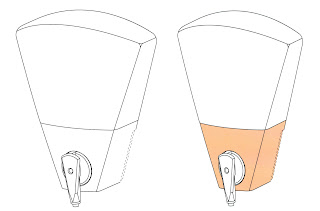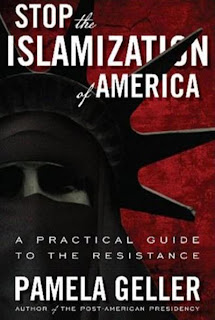TTABlog Quarterly Index: April - June 2012
E-mail subscriptions to the TTABlog are available. Just enter your e-mail address in the box on the right to receive a daily update via Feedblitz. You may also follow the blog on Twitter (here). And don't forget to leave your comments! [Note that E-mail subscribers must go to the blog to see comments]. Finally, please report any broken or inoperative links, as well as any errors and omissions, to the TTABlogger at jwelch at lalaw.com.

Section 2(d) - Likelihood of Confusion:
- On Summary Judgment, TTAB Says No "CAN DEW" Due to Confusingly Similarity to "MOUNTAIN DEW" for Soft Drinks
- WYHA? TTAB Finds "FIREBIRD X" For Guitars Confusingly Similar to "FIREBIRD" for Amplifiers
- Test Your TTAB Judge-Ability: Are SOOGLE And GOOGLE Confusingly Similar for Travel Services?
- TTAB Finds LOUISIANA FAST START Not Confusingly Similar to QUICK START For Business Training Services
- Test Your TTAB Judge-Ability: Are NIKEA and IKEA Confusingly Similar for Candy?
- TTAB Finds RLX RALPH LAUREN Not Confusingly Similar to ROLEX for Watches
- Test Your TTAB Judge-Ability: Two "Skateboarder" Design Marks for Clothing
- Test Your TTAB Judge-Ability: Is GREEN DOOR for Sex Club Services Confusingly Similar to THE GREEN DOOR for Restaurant Services?
- Finding Fruit Juice and Coffee/Tea Related, TTAB Affirms 2(d) Refusal of COCO LOCO
- TTAB Finds GAME FACE for Sports Masks Confusingly Similar to GAME FACE for Paint Ball Goggles
- Test Your TTAB Judge-Ability: Are BODY FRUIT and FRUIT OF THE LOOM Confusingly Similar for Clothing?
- AMERICA'S STRONGEST MAN Not Confusingly Similar to WORLD'S STRONGEST MAN, Says TTAB
- Opposer Dodges Fraud Counterclaim, But Purchaser Care and Lack of Actual Confusion Lead to TTAB Dismissal
- Test Your TTAB Judge-Ability on These Five Section 2(d) Appeals
- "VIDEO POD" for Video Projectors Merely Descriptive and Confusingly Similar to "IPOD," Says TTAB
- Test Your TTAB Judge-Ability: Is DA VINCI Confusingly Similar to L'IL DAVINCI and DON DAVINCI for Clothing?
- PRL (Ralph Lauren) Rides Fame of "Polo Player" Design Mark to Victory in Section 2(d) Cancellation
- TTAB Finds Reverse Confusion Between KUTT CALHOUN and Supplementally-Registered CALHOUN for Clothing
- WYHA? TTAB Affirms 2(d) Refusal of AIRIA over AREA, Both for Night Clubs
- Test Your TTAB Judge-Ability: Are NETGARD and NETGATE Confusingly Similar for Security Software?
- WYHP? TTAB Denies Section 2(d) Petition to Cancel SCIENTIFIC SOLUTIONS Registration Due To Dissimilarity of Goods
- WYHA? TTAB Affirms 2(d) and Specimen Refusals of SONEX for Aircraft Engines
- Test Your TTAB Judge-Ability: Is Confusion Likely Between COSMETIC WORLD for Industry Newsletter and for Retail Store Services?
- Test Your TTAB Judge-Ability on these Four Section 2(d) Appeals
- Precedential No. 19: TTAB Finds Actual Confusion and Bad Faith, Sustains SUPER CHIRO TEA Opposition
- Precedential No. 18: Invoking 13th duPont Factor, TTAB Reverses 2(d) Refusal of ANYWEAR for Footwear
- Test Your TTAB Judge-Ability: Is INVISIBLE for Hair Care Preparations Confusable with INVISIBLE for Cosmetics?
- Test Your TTAB Judge-Ability: Is TEMPEST for Perfume Confusingly Similar to TEMPEST for Indoor Tanning Preparations?
Section 2(e)(1) - Mere Descriptiveness:
- Test Your TTAB Judge-Ability on These Four Section 2(e)(1) Mere Descriptiveness Refusals
- WYHA? "THE BIG RIG MATTRESS" Merely Descriptive of Mattresses, Says TTAB
- TTAB Reverses Mere Descriptiveness Refusal of SURF COUTURE for Clothing
- "VIDEO POD" for Video Projectors Merely Descriptive and Confusingly Similar to "IPOD," Says TTAB
- Affirming Disclaimer Requirement, TTAB Finds RESPOSABLE Merely Descriptive of Patient Sensors
- Test Your TTAB Judge-Ability: Is "FANTRIP" Merely Descriptive of Travel Agency Services for Fan-Themed Destinations?
Section 2(e)(2) - Primarily Geographically Descriptive:
Section 2(e)(4) - Primarily Merely A Surname::

Section 2(e)(5) - Functionality:
Section 2(f) - Acquired Distinctiveness:
- TTAB Reverses Functionality Refusal of 3M Hand Sanitizer Dispenser, But Affirms Failure-to-Function Refusal
- On CAFC Remand, TTAB Again Finds COACH Has Acquired Distinctiveness for Test-Prep Software
- Finding Coke's "ZERO" Has Acquired Distinctiveness, TTAB Dismisses Opposition
- Section 2(f) Evidence for Backpack Design Falls Short, Says TTAB
Abandonment:
Dilution:
Fraud:
- Opposer Dodges Fraud Counterclaim, But Purchaser Care and Lack of Actual Confusion Lead to TTAB Dismissal
- FRAUD-O-METER Version 2.0 Released in Beta
Genericness:
- TTAB Finds "WHO'S WHO ONLINE" Generic for ... Guess What?
- TTAB Dismisses Petition to Cancel BACKRACK for Truck Headache Racks Due to Insufficient Proof of Genericness
- Test Your TTAB Judge-Ability: Is RECYCLED PAPER Generic for Greeting Cards?
- "DOG GAMES" for Pet Toys Clears Genericness and 2(f) Hurdles, Says Divided TTAB Panel
Discovery/Evidence/Procedure:
- Precedential No. 21: TTAB Excludes Opposer's Sole Trial Witness Due To Failure to Previously Identify Her
- Precedential No. 20: TTAB Says Partial Cancellation for Abandonment Governed by Section 14, not Section 18
- Three Motions to Amend Marks: How Would You Rule?
Use in Commerce/Drawing/Specimen of Use:
- Precedential No. 22: TTAB Re-designates Azteca Specimen-of-Use Decision as Precedential
- USPTO Amends Rules Regarding Specimens of Use, Launches Pilot "Deadwood" Project
- On Remand from CAFC, TTAB Affirms Failure-to-Function Refusal of ONE NATION UNDER GOD for Charity Bracelets
- Test Your TTAB Judge-Ability on this Trademark Specimen of Use
- WYHA? TTAB Affirms 2(d) and Specimen Refusals of SONEX for Aircraft Engines
- Test Your TTAB Judge-Ability on this Service Mark Specimen of Use

CAFC Decisions:
- Divided CAFC Panel Affirms TTAB's Becton, Dickinson Functionality Ruling
- Double WYHA? CAFC Affirms TTAB: "NATIONAL CHAMBER" Merely Descriptive of Chamber of Commerce Services
Recommended Reading:
- Recommended Reading: Anne Gilson LaLonde, "You Are Not Going to Believe This! Deception, Misdescription and Materiality in Trademark Law"
- INTA Meeting Reading: The Trademark Reporter's Annual Review of International Trademark Law
Other:
- TTABlog Tweets and Re-Tweets
- TTAB Posts June 2012 Hearing Schedule
- Ted Davis Outline From INTA 2012: Annual Review of U.S. Federal Case Law
- TTABlogger Road Trip: San Francisco IP Law Assn., June 1-3, Healdsburg, CA
- TTABlogger Written Materials for Wednesday's INTA Talk
- USPTO Seeks Nominations for Trademark Public Advisory Committee (TPAC)
- TTAB Posts May 2012 Hearing Schedule
- BARBIE v BARBIE GRIFFIN Final Argument at TTAB
- Former TTAB Nemesis Leo Stoller Pleads Guilty to Bankruptcy Fraud
- Meet the Bloggers VIII at INTA 2012: Have You Signed Up?
- TTABlogger in Person and in Print at INTA 2012 Annual Meeting
- TTAB Posts April 2012 Hearing Schedule
Text Copyright John L. Welch 2012.


































